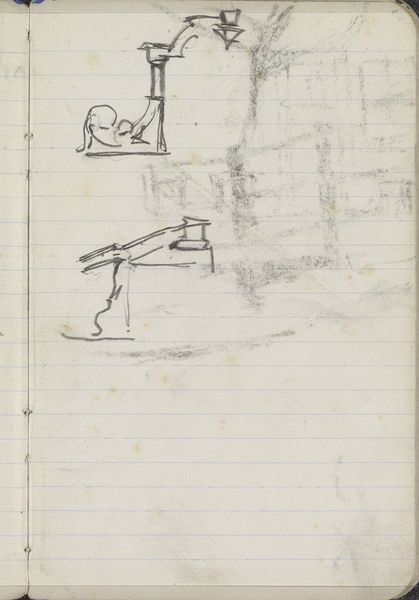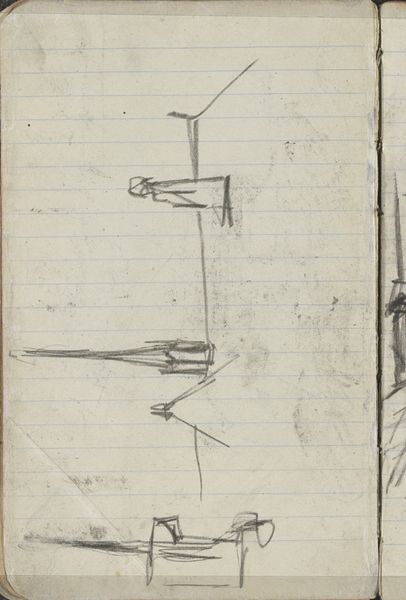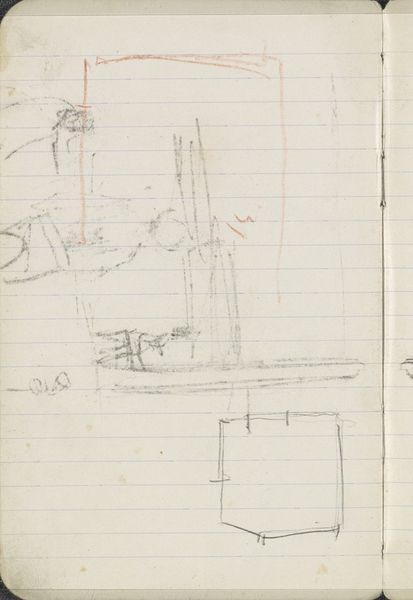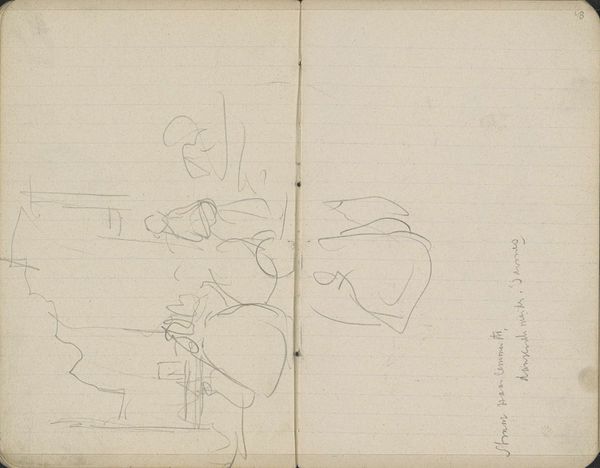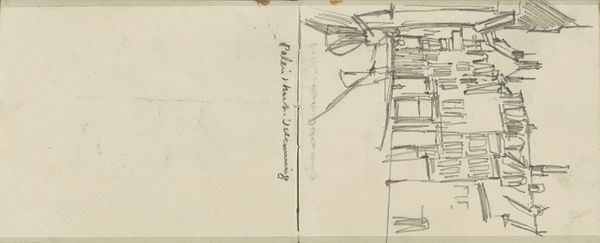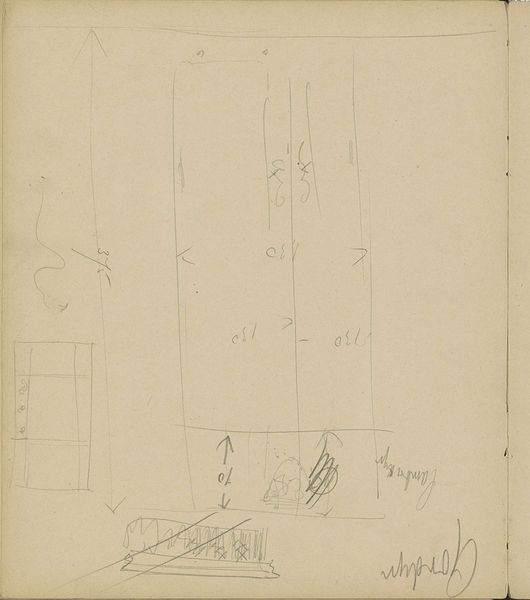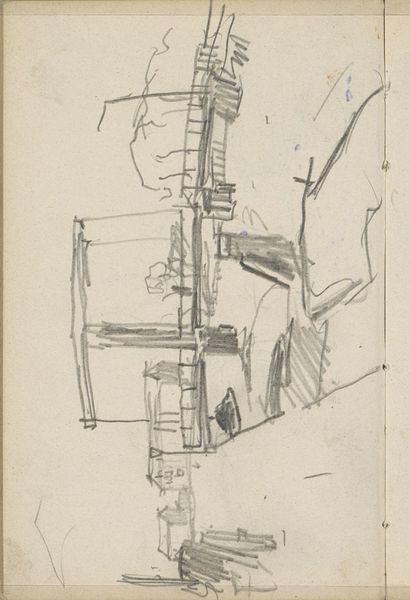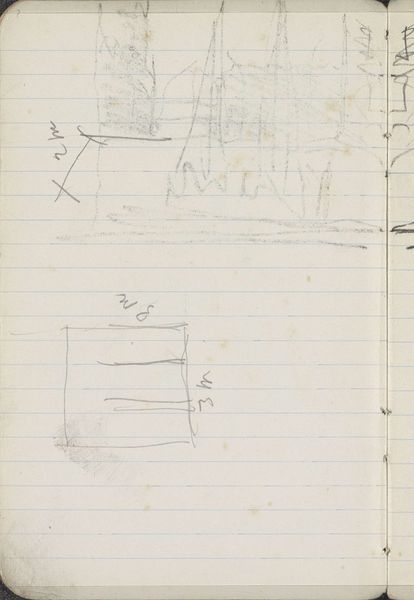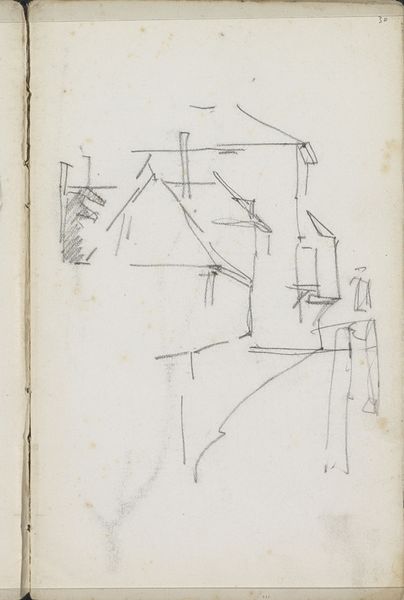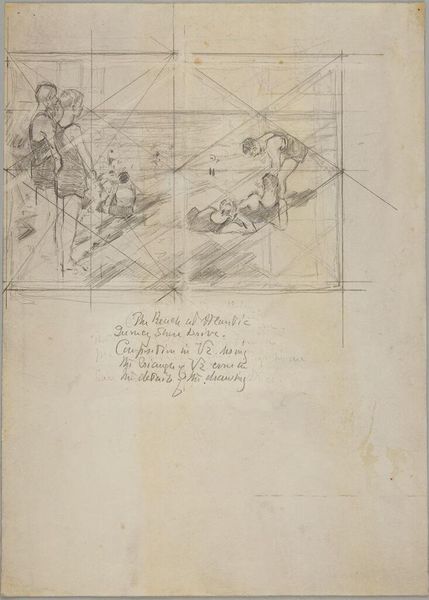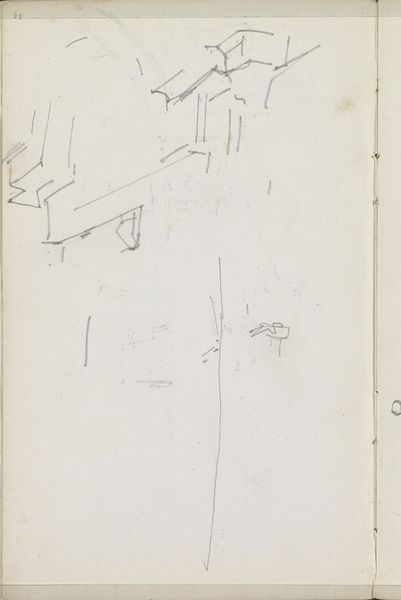
#
quirky sketch
#
sketch book
#
incomplete sketchy
#
personal sketchbook
#
idea generation sketch
#
pen-ink sketch
#
sketchbook drawing
#
storyboard and sketchbook work
#
sketchbook art
#
initial sketch
Copyright: Rijks Museum: Open Domain
Curator: Here at the Rijksmuseum, we have an intriguing sketch titled "Drie figuren achter een reling of balustrade" by Isaac Israels, made sometime between 1875 and 1934. It's a delicate piece, seemingly drawn with pen and ink on paper. Editor: Delicate is a good word. The open notebook and initial marks give the sense that we're looking into Israels' creative thought process. It's spontaneous, more like a fleeting glimpse. Curator: Precisely! Given Israels' focus on portraying modern life, it’s quite possible this study was made from life. What captures me is how economical Israels’ hand is. You see it most directly in the almost industrial, utilitarian character of the rail. Editor: And notice the quickly rendered figures themselves; they appear somewhat disengaged, perhaps observing a scene before them. The perspective almost suggests they're situated in a theater box. We get a peek behind the curtain, maybe of burgeoning leisure activities becoming democratized for the Dutch population. Curator: I agree. This brings to mind how the architecture itself, that railing, becomes a manufactured boundary shaping both social interaction and visibility. The readily available, mass produced artist sketchbooks of the time also allowed Israels to document those emerging public spheres. Editor: Absolutely, these kinds of images fed into the burgeoning visual culture that developed along with these modern spaces of spectacle. A fascinating interplay between the artist's gaze, the depicted social setting, and the materials at hand. Curator: The rawness adds a palpable layer, like uncovering strata. This is what's wonderful about early sketches. Editor: It lets us reconstruct Israels’ social context but also consider the role these notebooks had in shaping his more 'finished' pieces.
Comments
No comments
Be the first to comment and join the conversation on the ultimate creative platform.
